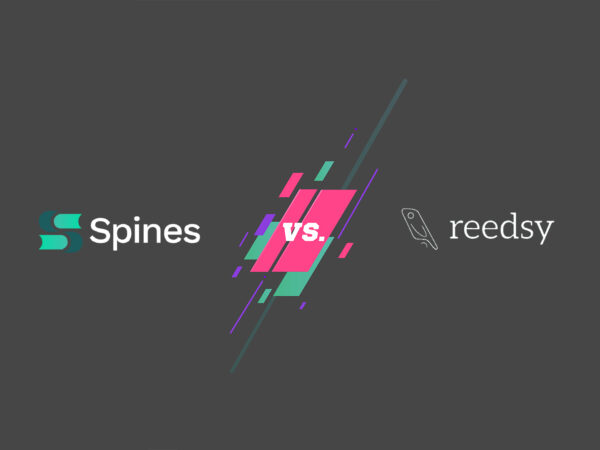Remember the days when publishing a book felt like trying to climb Mount Everest—barefoot? Well, thanks to self-publishing, that mountain has turned into a scenic hike. Over the past few years, self-publishing has shifted from a niche option to a mainstream choice, transforming the landscape of book publishing. This shift has empowered authors to take control of their creative destiny. But it’s not just about skipping the long queue to traditional publishers. It’s about accessing a global audience, having complete creative freedom, and—here’s the kicker—earning more money for your hard work.
Traditional Publishing: The Old Guard
Ah, traditional publishing—the grand, slow-moving ship of the literary world. Traditionally published books still carry prestige, but that comes at a cost. Authors typically surrender creative control, deal with long wait times (we’re talking six months to a year or more), and, in many cases, are left with a fraction of the revenue. Even with all this, traditional publishers offer value: professional editors, marketing budgets (if you’re lucky), and the allure of being on a big-name publisher’s list. But for many writers today, it feels like trying to catch a train that’s already left the station.
The Shift from Traditional Publishing
The shift from traditional publishing to self-publishing has been nothing short of revolutionary in the publishing world over the past few years. With the rise of self-publishing, authors are no longer confined to the traditional routes that often felt like navigating a labyrinth. Instead, they can now take the reins of their own work, steering it in the direction they envision.
This seismic shift has been driven by several factors. The increasing accessibility of self-publishing platforms has democratized the publishing process, allowing anyone with a story to tell to share it with the world. The growing demand for digital content has also played a significant role, as readers increasingly turn to eBooks and audiobooks. And let’s not forget the allure of maintaining creative control and earning higher royalties—two major incentives for authors to self-publish.
Traditional publishing has long been the gatekeeper of the literary world, but self-publishing has disrupted this model. By bypassing the traditional publishing process, authors can publish their work directly to readers, opening up new opportunities to reach a global audience and build a loyal following. However, this newfound freedom comes with its own set of challenges. Self-published authors must wear many hats, taking on the responsibilities of editing, formatting, cover design, and marketing. This can be time-consuming and require a significant investment of both time and money.
Despite these challenges, the shift from traditional publishing to self-publishing shows no signs of slowing down. As technology continues to advance and self-publishing platforms become even more user-friendly, more authors will be able to take advantage of the benefits of self-publishing. This shift promises to lead to a more diverse and vibrant publishing landscape, with a wider range of voices and perspectives represented.
Self-Publishing: Writing Your Own Rules
Self-publishing is the equivalent of cutting the middleman and booking your own flight. Writers can now get their books out faster, keep creative control, and, most importantly, retain the lion’s share of the profits. By self-publishing their own books, authors have greater control over their work compared to traditional publishing. The self-publishing market has exploded, and it’s showing no signs of slowing down. According to Bowker, the number of self-published titles rose by over 40% between 2019 and 2021. And in case you’re wondering, yes, that includes everything from bestselling romance novels to niche non-fiction works about, say, the life cycle of dragonflies.
At Spines, we make this process even smoother, combining the power of AI with human expertise to give you the best of both worlds. Our platform offers editing, cover design, audiobook creation, and global distribution—all in under 30 days. Imagine spending less time waiting and more time celebrating your book launch. Plus, we provide personal support through a dedicated production manager to guide you from manuscript to published masterpiece.
Why More Authors are Embracing the Rise of Self-Publishing
The allure of self-publishing isn’t just about speed or control. Many authors realize that self-publishing offers something even more powerful: freedom. You decide what you write, how it looks, where it’s sold, and how much you charge. Want to price your book at $4.99 instead of $19.99? Done. Want to release a paperback, eBook, and audiobook simultaneously? Easy.
Plus, you don’t have to sacrifice quality. With platforms like Spines, authors get access to professional-grade tools and support, from AI-driven editing to expert marketing strategies. The result? Self-published authors can produce books that rival traditionally published ones in terms of polish, professionalism, and reader appeal—without the hefty price tag.
The Benefits of Self-Publishing
Self-publishing offers a treasure trove of benefits for authors, making it an increasingly attractive option in the modern publishing world. One of the most significant advantages is creative control. Self-published authors have the final say over every aspect of their work, from the editing and formatting to the cover design. This ensures that their vision is fully realized, without any compromises.
Another major perk is the potential for higher royalties. While traditional publishers typically offer authors a modest 10-15% of the cover price, self-published authors can earn up to 70%. This means that authors can reap the financial rewards of their hard work, rather than seeing the lion’s share of the profits go to the publisher.
Speed is another key benefit of self-publishing. Traditional publishing can be a slow process, often taking years from manuscript to market. In contrast, self-publishing allows authors to get their work out quickly, often in a matter of weeks or months. This rapid turnaround time means that authors can respond to reader feedback and make changes to their work as needed, keeping their content fresh and relevant.
Self-publishing also opens up the world to authors. By distributing their work through online retailers like Amazon, Apple Books, and Barnes & Noble, self-published authors can reach a global audience. This has created new opportunities for authors to build a loyal following and connect with readers from all corners of the globe.
Finally, self-publishing allows authors to maintain ownership of their work. Unlike traditional publishing, where authors often sign over the rights to their book, self-published authors retain full control. This means they can make decisions about how their book is published, marketed, and distributed, ensuring that their work remains true to their vision.
The Rise of Self-Published Books
The rise of self-published books has been one of the most significant trends in the publishing industry over the past few years. According to a report by Author Earnings, self-published books now account for over 30% of all books sold on Amazon—a staggering increase from just a few years ago when self-published titles made up less than 10% of the market.
This surge in self-published books has been fueled by the increasing accessibility of self-publishing platforms. Services like Amazon Kindle Direct Publishing, CreateSpace, and Lulu have made it easier than ever for authors to publish their work directly to readers. The growing demand for digital content has also played a crucial role, as more readers turn to eBooks and audiobooks for their literary fix.
Self-published books have also gained significant visibility and credibility in recent years. Many self-published authors have achieved remarkable success, with some even becoming bestsellers. Authors like Amanda Hocking and Hugh Howey have shown that self-publishing can be a viable path to literary success. Self-published books have also been recognized by major literary awards, further cementing their place in the literary world.
The rise of self-published books has led to a more diverse and vibrant publishing landscape. Self-published authors can explore genres and topics that may not have been viable through traditional publishing channels. This has opened up new opportunities for readers to discover unique voices and stories that might otherwise have gone unheard.
As the publishing industry continues to evolve, the rise of self-published books is likely to continue. With the increasing accessibility of self-publishing platforms and the desire for authors to maintain creative control and higher royalties, self-published books will undoubtedly play an increasingly important role in the literary world.
The Challenges of Self-Publishing: Not All Sunshine and Royalties
Of course, it’s not all roses in the self-publishing world. Many self-published authors quickly discover that while they may have written a fantastic book, the real challenge lies in getting it noticed. Marketing is a full-time job, and without a traditional publisher’s muscle, self-published authors need to get creative. That’s where platforms like Spines come in, helping with global distribution through channels like Amazon and Barnes & Noble, ensuring your book isn’t just sitting on a digital shelf collecting dust.
Then there’s the question of quality control. How do you ensure your book is error-free and beautifully formatted? At Spines, we’ve solved that problem with our AI-powered proofreading and formatting tools, backed by real human experts. Whether it’s creating an eye-catching cover or making sure your text flows like a fine wine, we’ve got you covered.
Technology: The Wind Beneath Self-Publishing’s Wings
The rise of self-publishing wouldn’t have been possible without the internet—and no, we’re not just talking about the ability to Google “How to publish a book.” Technological advancements, especially in the digital realm, have made it easier than ever for authors to publish and sell their books. Platforms like Amazon KDP, combined with tools for formatting, cover design, and marketing, have removed the old barriers to entry. Additionally, technology has significantly impacted the quality and accessibility of creative writing in self-publishing, offering new opportunities for writers to share their work independently.
And it’s not just about getting the book out there. Audiobooks, eBooks, and print-on-demand services mean authors can reach readers in every corner of the globe. Spines offers all these formats through a single dashboard, making it as easy as clicking “publish” and watching your book go live.
The Future: Will Self-Publishing Become the Norm?
So, is self-publishing the future of the book industry? In many ways, yes. With the traditional publishing model showing its age, more writers are opting to self-publish. As technology continues to evolve, authors will only have more tools at their disposal, giving them the ability to write, publish, and market their books with even greater efficiency.
Still, traditional publishing will likely always have its place, especially for those looking for that coveted “big publisher” stamp of approval. But for the rest of us? The self-publishing revolution is here, and it’s not going anywhere.
Your Story, Your Way
At the end of the day, self-publishing is all about empowerment. It’s about giving writers the freedom to share their stories without waiting for someone else’s approval. It’s about owning the process, the product, and, let’s be honest, the profits.
So, if you’ve been sitting on a manuscript, wondering whether to take the leap, consider this your sign. The publishing world has changed dramatically, and now it’s your turn to join the ranks of self-published authors who are transforming the industry one book at a time.
Ready to publish? At Spines, we make it easy, fast, and affordable. Upload your manuscript today, and let’s bring your story to life. After all, the next great book waiting to be written and published might just be yours.








